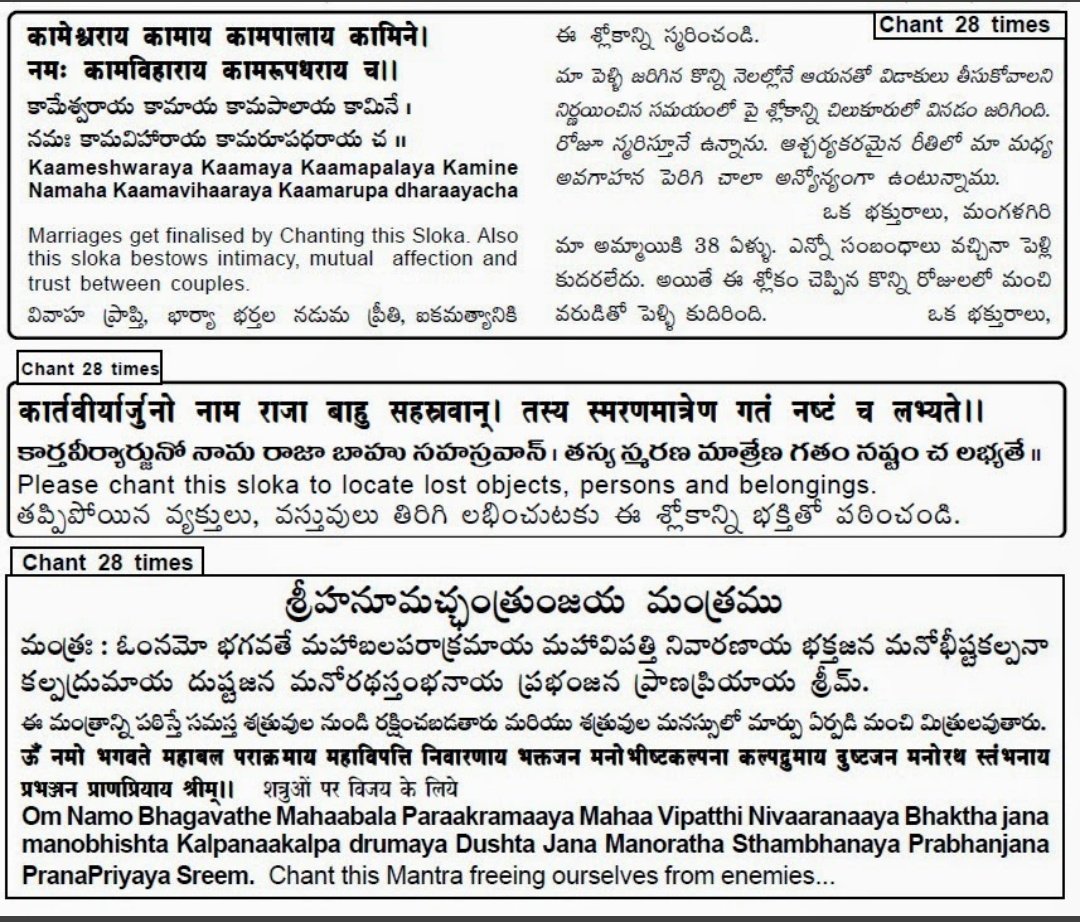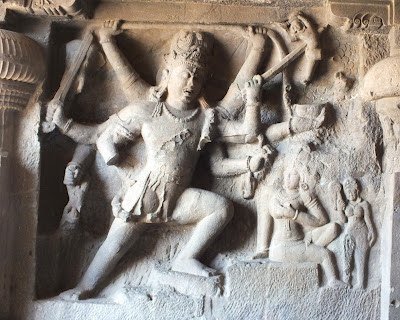1/ Satoshi’s Vision™ is a silly endeavor, as it doesn’t matter what it was, we are where we are now. However, those pushing the “Bitcoin was first made for payments” narrative insist on cherry-picking sentences from the white paper and forum posts to champion their perspective.
“[with Bitcoin] we can win a major battle in the arms race and gain a new territory of freedom for several years.” — Satoshi Nakamoto
“Bitcoin [is] more like a collectible or commodity.” - Satoshi
Satoshi here clearly highlights that Bitcoin’s scarcity gives it value… as a SoV. Limited supply is meaningless for VISA
Bitcoin’s launch during the 08' financial crisis was not coincidental. Satoshi had been coding Bitcoin for the last 2 years. Let’s look at the sequence of events
Sept 15: Lehman Brothers files for bankruptcy, the largest in U.S. history ($600B)
Sept 17: Investors withdrew a record $144B from their money market accounts. During a typical week, only about $7B is withdrawn
Oct 13: Treasury Secretary Paulson talks with 9 major bank CEOs. The total bailout package ~$2.25T
Oct 21: Fed lends $540B to bail out money market funds
Oct 31: Satoshi publishes the Bitcoin whitepaper
https://t.co/Bf8X1VI7Qo
“A purely peer-to-peer version of electronic [bearer assets] that would allow online payments to be sent directly from one party to another without going through a financial institution."
@pierre_rochard
Aka the whitepaper was marketing, the important details are coming.
“The Times 03/Jan/2009 Chancellor on brink of second bailout for banks”
What he was trying to accomplish was clear, he wanted to build a new backbone for the financial system. Bitcoin isn't merely digital cash, but an alternative to banks.
SoV and MoE aren’t mutually exclusive. It’s about where in the cycle of appreciation we’re in. At maturity, the payment use case finally makes sense.
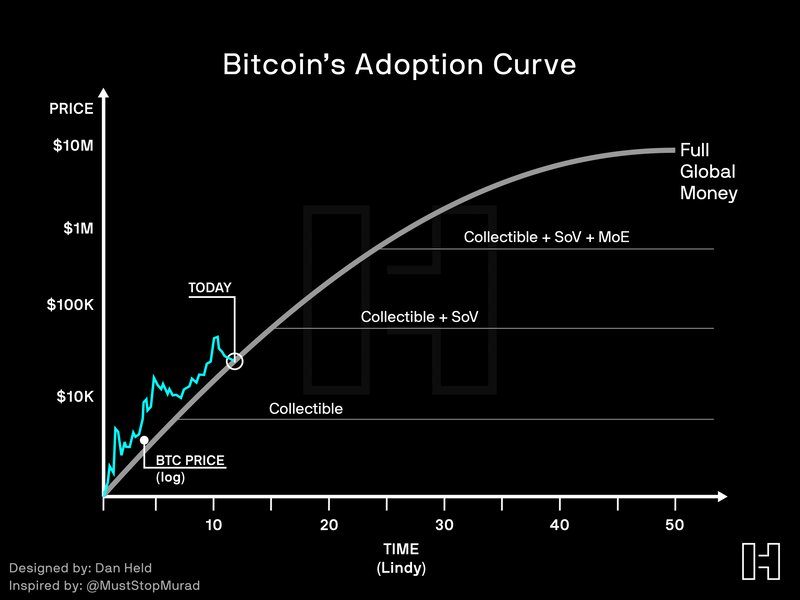
https://t.co/C6kpf8cjKX

A/ Satoshi used it to attract the cypherpunks
B/ HODLing isn’t good for business. In order to command higher valuations, startups latched onto narratives that VCs would fund. And in 2013-2016 that was “merchant processing.”
and @ChangeTip, both attempted to get people to use Bitcoin for payments. Consumers couldn't care less, which is entirely intuitive: right now it’s not faster, cheaper, or easier to use for 99.99% of use cases.
https://t.co/TYJDEruzvc
More from Dan Held
1/ Bitcoin: a bold new world.
Satoshi published the white paper on 10/31/2008. Right at the moment of peak despair during the 2008 financial crisis. Trust had been lost in a world that ran on trust.
2/ But why October 31st? It certainly wasn’t because Satoshi was a fan of halloween, it must have had a deeper meaning. With all of his actions, he demonstrated a careful precision.
He had been working on Bitcoin for at least a year and a half before publishing the white paper.
3/ “I believe I've worked through all those little details over the last year and a half while coding it, and there were a lot of them. The functional details are not covered in the paper, but the sourcecode is coming soon” - Satoshi Nakamoto
4/ On August 18, 2008 Satoshi registers registers https://t.co/rMWwiEwtxT through https://t.co/Uj8lMr10kB.
Satoshi was ready and waiting to hit the send button throughout 2008. What was so special about October 31st?
5/ I believe that Satoshi published the Bitcoin white paper on 10/31 as a hat tip to the ancient Gaelic festival of “Samhain” which was also the date in which Martin Luther nailed his 95 Theses to a church door. Both represent an end of the old and the beginning of the new.
Satoshi published the white paper on 10/31/2008. Right at the moment of peak despair during the 2008 financial crisis. Trust had been lost in a world that ran on trust.
2/ But why October 31st? It certainly wasn’t because Satoshi was a fan of halloween, it must have had a deeper meaning. With all of his actions, he demonstrated a careful precision.
He had been working on Bitcoin for at least a year and a half before publishing the white paper.
3/ “I believe I've worked through all those little details over the last year and a half while coding it, and there were a lot of them. The functional details are not covered in the paper, but the sourcecode is coming soon” - Satoshi Nakamoto
4/ On August 18, 2008 Satoshi registers registers https://t.co/rMWwiEwtxT through https://t.co/Uj8lMr10kB.
Satoshi was ready and waiting to hit the send button throughout 2008. What was so special about October 31st?
5/ I believe that Satoshi published the Bitcoin white paper on 10/31 as a hat tip to the ancient Gaelic festival of “Samhain” which was also the date in which Martin Luther nailed his 95 Theses to a church door. Both represent an end of the old and the beginning of the new.
1/ [December Bitcoin yield update]
Over the last year and a half, I’ve earned ~1.2BTC with various yield generating services to earn an average of 5% on 30 BTC.
Here’s my journey and how to guide👇
2/ Here are the ways you can earn yield:
Lending (Easiest/most popular)
Yield: 3-6%
- Ledn: https://t.co/4x0YATuQ0v
- BlockFi: https://t.co/90Xtg2cNka
Covered calls (Harder)
Yield: 1-80%
- Deribit: https://t.co/2iQVkXlylP
- LedgerX:
3/ Earning a yield enables you to stack more sats (what I’m doing), or reduce the temptation to sell your coin through earning an income.
The yield you earn comes with RISK!
Below is my current allocation for Dec (will update MoM)
(yellow = changes)
https://t.co/PZwVYs8lFT

4a/ [Nov > Dec Changelog]
- Covered calls: approx. 4 BTC was in $40k 12/28/20 contracts. Those closed without them being exercised (a good outcome for me). However, I was nervous about my January 1/28 $50k contract so I decided to close out my position at a small loss.
4b/ [Nov > Dec Changelog]
- In process of reallocating the 5 BTC (probably will be a lending platform).
- I incorrectly had my Ledn rate at 6.5%, it's 6.25%
Over the last year and a half, I’ve earned ~1.2BTC with various yield generating services to earn an average of 5% on 30 BTC.
Here’s my journey and how to guide👇
2/ Here are the ways you can earn yield:
Lending (Easiest/most popular)
Yield: 3-6%
- Ledn: https://t.co/4x0YATuQ0v
- BlockFi: https://t.co/90Xtg2cNka
Covered calls (Harder)
Yield: 1-80%
- Deribit: https://t.co/2iQVkXlylP
- LedgerX:
3/ Earning a yield enables you to stack more sats (what I’m doing), or reduce the temptation to sell your coin through earning an income.
The yield you earn comes with RISK!
Below is my current allocation for Dec (will update MoM)
(yellow = changes)
https://t.co/PZwVYs8lFT

4a/ [Nov > Dec Changelog]
- Covered calls: approx. 4 BTC was in $40k 12/28/20 contracts. Those closed without them being exercised (a good outcome for me). However, I was nervous about my January 1/28 $50k contract so I decided to close out my position at a small loss.
4b/ [Nov > Dec Changelog]
- In process of reallocating the 5 BTC (probably will be a lending platform).
- I incorrectly had my Ledn rate at 6.5%, it's 6.25%
More from Bitcoin
#Bitcoin update:
- Trapped in consolidation between $30 and $38k
- Lower highs and supply above c$38k
- Buying interest on the books £30-33k
- Meme consolidation triangle
- 20 wma @ $19.5k
- Accumulation VWAPs in the 20s
- underlying tether fud
- 61.8% retracement c. $22k
- 3 Day predator unconfirmed Orange candle
- Demand at low $30s was tested today and has since bounced & Coinbase led price on the drop
- Market structure is complex - Triangle is misleading
- Lots of orders stacked @ 30-33k.

- Market is fearful in the demand zone as shown by funding; i do not think we are ready to drop quite yet; Expecting longer consolidation.
- New Tether output has been on hold but new money came today
- Tether case request for 30 more days; could be indicative of consolidation
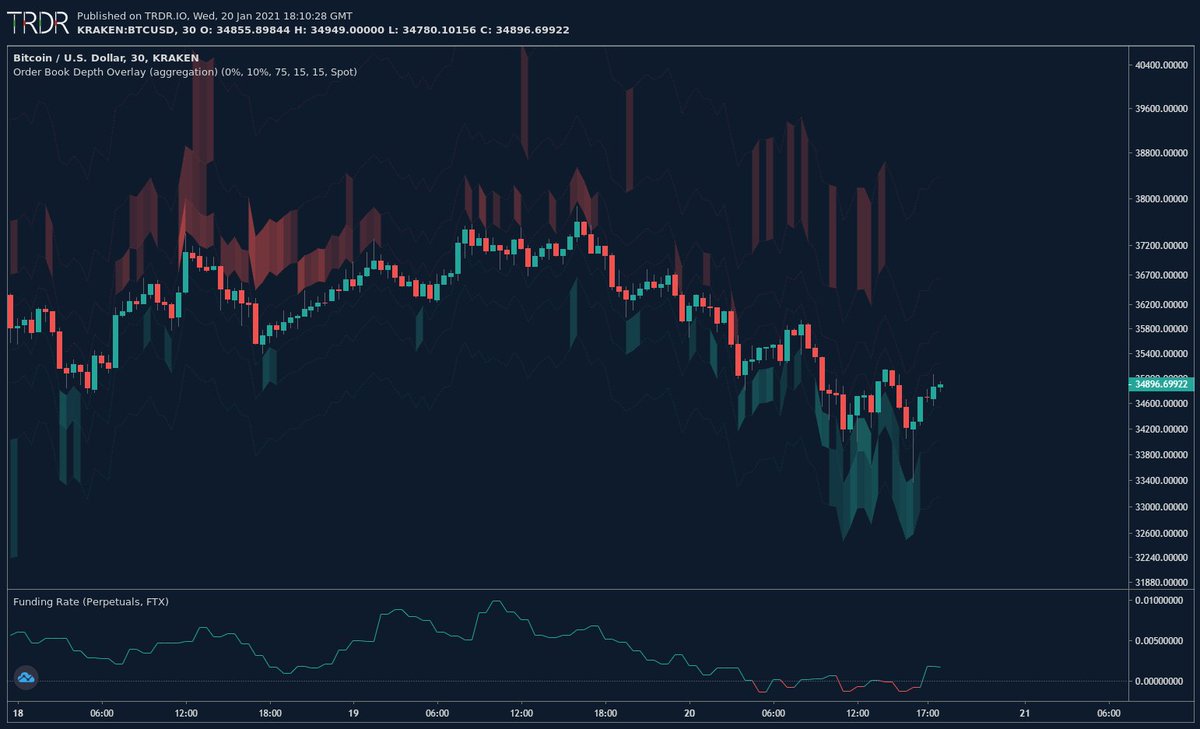
- Breakdown in price deeper than high $20s / lower $30s would IMO most likely require FUD induced event
- If stars align 20 WMA is catching up fast and will probably be resting in with the accumulation VWAPs, 61.8% retracement &d drives into big buy orders.
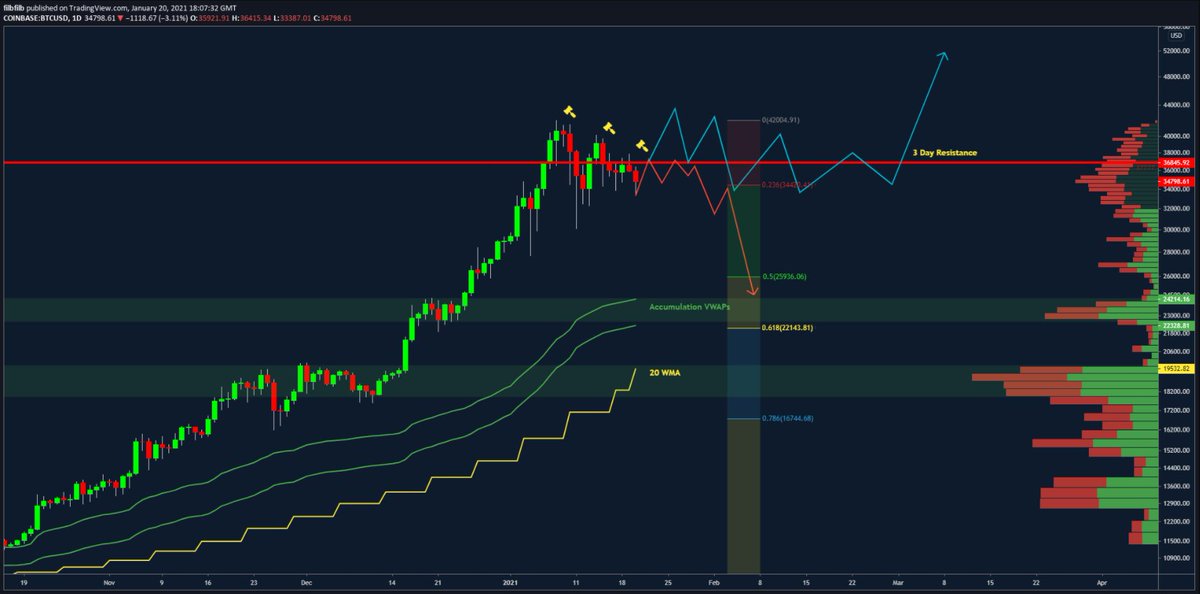
- Why did we stop @ $40k?
- Miners deep in profit vs. 654 average; time to tp
- SImilar response in other cycles
https://t.co/Iurd68NnZZ
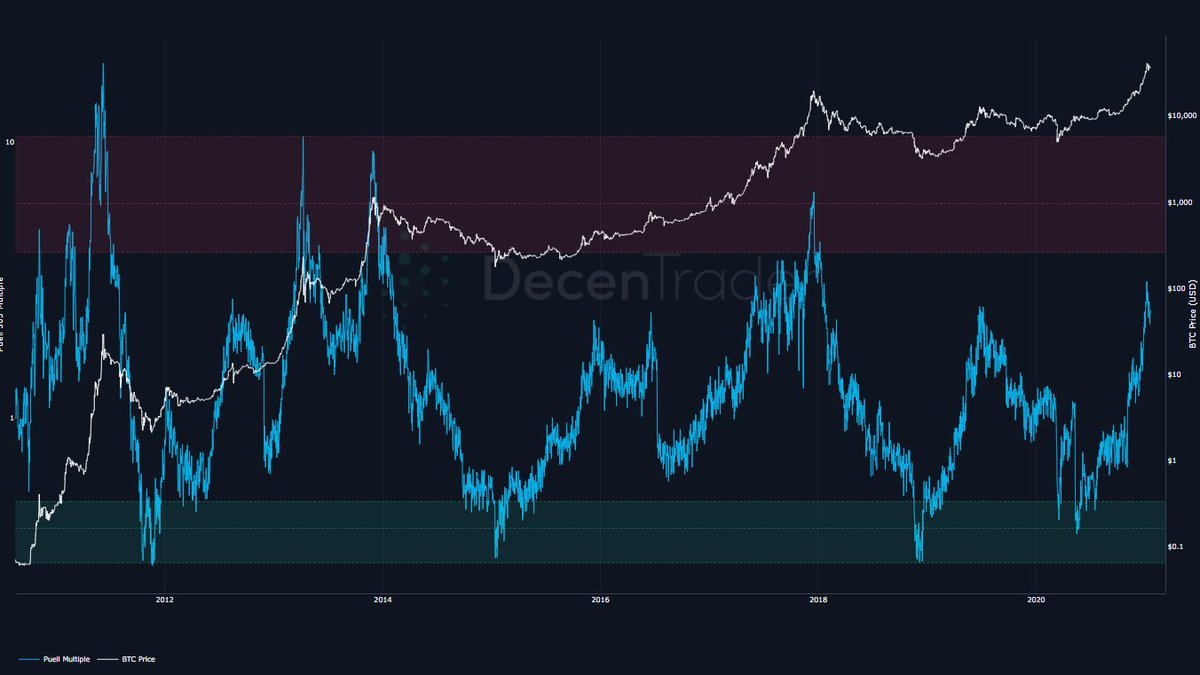
- Trapped in consolidation between $30 and $38k
- Lower highs and supply above c$38k
- Buying interest on the books £30-33k
- Meme consolidation triangle
- 20 wma @ $19.5k
- Accumulation VWAPs in the 20s
- underlying tether fud
- 61.8% retracement c. $22k
- 3 Day predator unconfirmed Orange candle
- Demand at low $30s was tested today and has since bounced & Coinbase led price on the drop
- Market structure is complex - Triangle is misleading
- Lots of orders stacked @ 30-33k.

- Market is fearful in the demand zone as shown by funding; i do not think we are ready to drop quite yet; Expecting longer consolidation.
- New Tether output has been on hold but new money came today
- Tether case request for 30 more days; could be indicative of consolidation

- Breakdown in price deeper than high $20s / lower $30s would IMO most likely require FUD induced event
- If stars align 20 WMA is catching up fast and will probably be resting in with the accumulation VWAPs, 61.8% retracement &d drives into big buy orders.

- Why did we stop @ $40k?
- Miners deep in profit vs. 654 average; time to tp
- SImilar response in other cycles
https://t.co/Iurd68NnZZ

1/9 Bitcoin has performed remarkably these past few weeks despite:
-Most of DeFi falling 50-80%
-CFTC charging BitMEX
-POTUS contracting Covid
-Delayed stimulus talks
-FCA announcing a derivative ban for retail
Why? Let’s see what we can find on-chain
2/9 Bitcoin’s Realized Cap has been steadily increasing just as it did before the 2017 bull market took off. If it continues as it did in 2017, 2021 should be an interesting year.
https://t.co/nqgX7vTMDV

3/9 Bitcoin MVRV, whilst more volatile this market cycle, is also is holding the same trajectory it did during the 2016/17 bull market
https://t.co/jadbn6nCOB

4/9 Looking at the supply of Bitcoin on exchanges is a good indication as to whether or not users are increasing trading activity, or increasing hodl activity. With supply reducing it looks like the tendency recently has been driven by hodlers
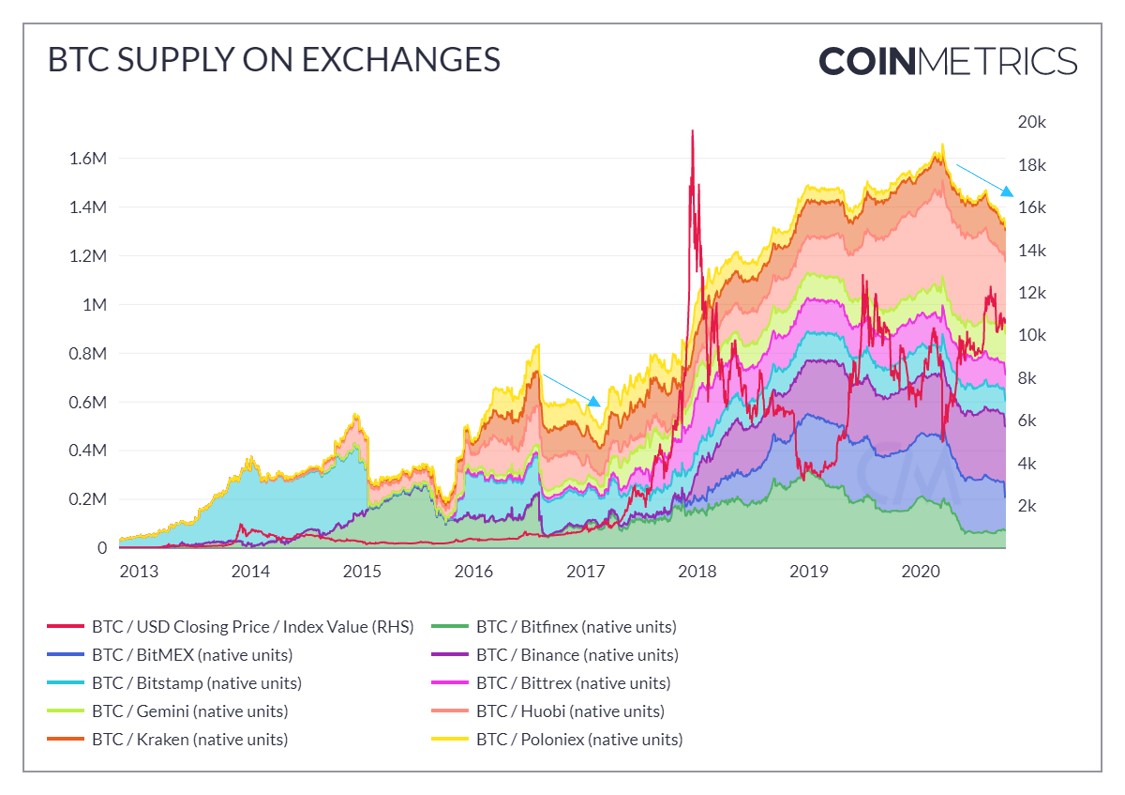
5/9 Despite the recent volatility, the number of Bitcoin whales continues to increase, indicating the growing number of large holders that have positive expectations for the future of Bitcoin

-Most of DeFi falling 50-80%
-CFTC charging BitMEX
-POTUS contracting Covid
-Delayed stimulus talks
-FCA announcing a derivative ban for retail
Why? Let’s see what we can find on-chain
2/9 Bitcoin’s Realized Cap has been steadily increasing just as it did before the 2017 bull market took off. If it continues as it did in 2017, 2021 should be an interesting year.
https://t.co/nqgX7vTMDV

3/9 Bitcoin MVRV, whilst more volatile this market cycle, is also is holding the same trajectory it did during the 2016/17 bull market
https://t.co/jadbn6nCOB

4/9 Looking at the supply of Bitcoin on exchanges is a good indication as to whether or not users are increasing trading activity, or increasing hodl activity. With supply reducing it looks like the tendency recently has been driven by hodlers

5/9 Despite the recent volatility, the number of Bitcoin whales continues to increase, indicating the growing number of large holders that have positive expectations for the future of Bitcoin














